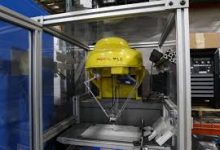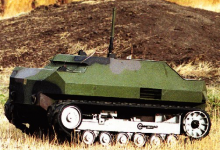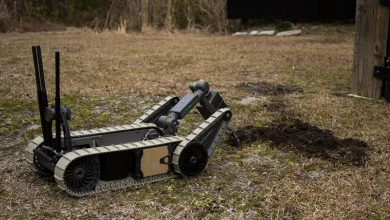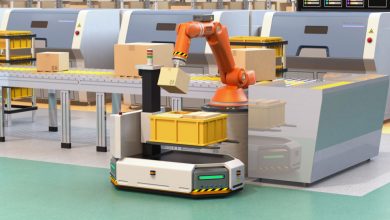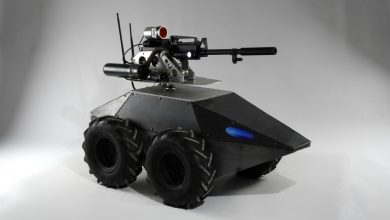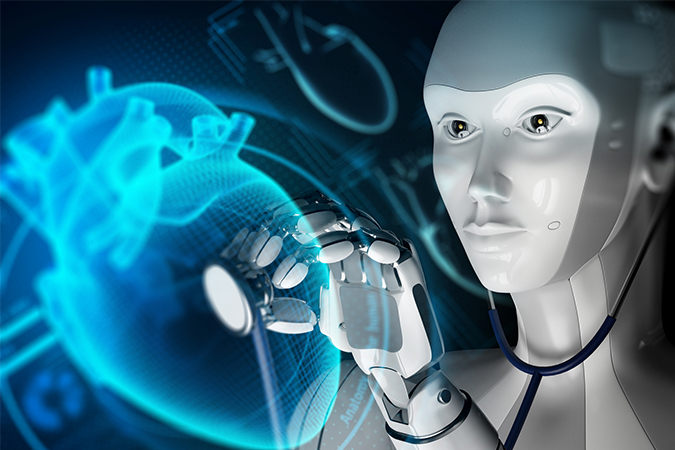
Healthcare robotics is an evolving field that blends advanced robotics and automation technologies with medical science to enhance patient care, improve precision in surgical procedures, and optimize the efficiency of healthcare systems. As the global population ages and healthcare demands increase, the integration of robotics in healthcare is poised to play a critical role in addressing these challenges. This comprehensive overview will delve into the types of healthcare robots, their applications, benefits, challenges, and future prospects.
Types of Healthcare Robots
Surgical Robots:
Surgical robots, such as the da Vinci Surgical System, are among the most well-known and widely used in healthcare settings. These robots enable surgeons to perform complex procedures with enhanced precision, flexibility, and control. Equipped with high-definition 3D cameras and miniature instruments, surgical robots can facilitate minimally invasive surgeries, resulting in reduced patient recovery times, less pain, and lower risk of complications. Surgical robots are one of the most groundbreaking advancements within healthcare robotics, revolutionizing the way surgeries are performed. These sophisticated machines enhance the capabilities of surgeons, allowing for unprecedented precision, control, and minimally invasive procedures. This comprehensive overview explores the history, types, applications, benefits, challenges, and future directions of surgical robots in healthcare.
History of Surgical Robots:
The development of surgical robots began in the late 20th century, driven by the need for more precise and less invasive surgical techniques. The first significant milestone was the creation of the Puma 560, a robotic arm used to perform a neurosurgical biopsy under computed tomography (CT) guidance in 1985. This success demonstrated the potential of robotics in surgery, leading to further innovations. In the 1990s, NASA and the Defense Advanced Research Projects Agency (DARPA) collaborated on the development of telepresence surgery for astronauts and battlefield operations. This research culminated in the introduction of the da Vinci Surgical System in 2000 by Intuitive Surgical, which remains the most widely used surgical robot today. The da Vinci system set new standards for precision, dexterity, and minimally invasive surgery, marking the beginning of a new era in robotic-assisted surgery.
Types of Surgical Robots:
Teleoperated Surgical Robots:
Teleoperated robots, like the da Vinci Surgical System, are controlled by surgeons from a console. These robots consist of robotic arms equipped with surgical instruments and a high-definition 3D camera. The surgeon manipulates the robotic arms using joysticks and foot pedals, translating their movements into precise actions inside the patient’s body.
Supervisory-Controlled Robots:
Supervisory-controlled robots perform surgical tasks autonomously but under the supervision of a surgeon. The surgeon plans the procedure and programs the robot to execute specific tasks. An example is the ROBODOC system, used for hip and knee replacement surgeries.
Shared-Control Robots:
In shared-control systems, both the robot and the surgeon share control over the surgical instruments. The robot assists by providing stability, precision, and filtering out hand tremors, while the surgeon retains direct control over critical decisions and movements. This type of robot is often used in microsurgery and delicate procedures.
Autonomous Surgical Robots:
Autonomous robots perform certain surgical tasks independently, guided by advanced algorithms and artificial intelligence (AI). These robots are still in the experimental stage, with researchers exploring their potential for tasks such as suturing and tissue manipulation.
Applications of Surgical Robots:
Cardiac Surgery:
Robotic systems enable surgeons to perform complex heart surgeries with enhanced precision. Procedures such as mitral valve repair, coronary artery bypass, and atrial septal defect repair are conducted with minimal invasiveness, reducing recovery times and complications.
Neurosurgery:
Robotic systems enhance the precision required in delicate brain and spinal surgeries. Robots assist in tasks such as tumor removal, deep brain stimulation (DBS) for Parkinson’s disease, and spinal fusion surgeries, improving outcomes and reducing risks.
Orthopedic Surgery:
In orthopedic procedures, robots provide precise bone cutting and implant placement. Applications include knee and hip replacements, spinal surgeries, and fracture repairs. Robotic systems like MAKO and ROSA have become integral tools in orthopedic surgery.
General Surgery:
Robotic systems are increasingly used in general surgeries, including colorectal procedures, bariatric surgeries, and thoracic surgeries. The precision and control offered by robots improve surgical outcomes and patient safety.
Benefits of Surgical Robots:
Enhanced Precision and Control:
Surgical robots provide unparalleled precision, allowing for finger movements than human hands can achieve. This is particularly beneficial in microsurgery and procedures involving delicate tissues.
Minimally Invasive Procedures:
Robotic-assisted surgeries typically involve smaller incisions, leading to reduced trauma, less pain, minimal scarring, and faster recovery times for patients. The reduced invasiveness also lowers the risk of infection and postoperative complications.
Improved Visualization:
Robotic systems offer high-definition, 3D visualization of the surgical site, enhancing the surgeon’s ability to see and manipulate tissues accurately. This improved visualization is critical in complex procedures.
Reduced Surgeon Fatigue:
Robotic systems allow surgeons to operate from a seated console, reducing physical strain and fatigue. This is particularly advantageous during lengthy procedures, maintaining surgeon performance and focus.
Consistency and Reproducibility:
Robots provide consistent and reproducible results, minimizing variations in surgical outcomes. This consistency is crucial in procedures requiring high precision, such as orthopedic implant placements.
Conclusion:
Surgical robots represent a transformative force in healthcare, offering significant benefits in terms of precision, control, and patient outcomes. While challenges such as high costs and technical complexity remain, ongoing advancements and innovations promise to overcome these hurdles. The future of surgical robotics is bright, with the potential to revolutionize how surgeries are performed and significantly improve patient care worldwide. As technology continues to evolve, surgical robots will become an integral part of modern medicine, enhancing the capabilities of surgeons and improving the lives of patients.
Rehabilitation Robots:
Rehabilitation robots assist patients in recovering physical functions lost due to injury, stroke, or other conditions. These robots provide repetitive, task-specific training, which is crucial for neural and muscular recovery. Examples include exoskeletons like the EksoGT and robotic therapy devices such as the InMotion Arm, which help patients regain mobility and strength in their limbs. Rehabilitation robots are an innovative subset of healthcare robotics designed to aid in the recovery of patients who have lost physical or cognitive functions due to injury, illness, or disability. These robots provide consistent, repeatable, and tailored therapeutic exercises, enhancing the effectiveness and efficiency of rehabilitation processes. This comprehensive exploration delves into the types, applications, benefits, challenges, and future directions of rehabilitation robots in healthcare.
Types of Rehabilitation Robots:
Exoskeletons:
Exoskeletons are wearable robotic devices that assist in movement by augmenting the strength and endurance of the user’s limbs. They are primarily used for patients with mobility impairments due to spinal cord injuries, stroke, or neurodegenerative diseases. Examples include the EksoGT and the ReWalk systems, which help users stand, walk, and perform various physical activities.
End-Effector Robots:
End-effector robots have a robotic arm or leg that interacts with the patient’s limb at a single point, typically the hand or foot. These robots are used in upper and lower limb rehabilitation, guiding the patient’s movements through predefined paths to improve strength, coordination, and range of motion. The InMotion Arm and the Lokomat are well-known examples of end-effector robots.
Therapeutic Robots:
Therapeutic robots are designed to engage patients in interactive and motivating rehabilitation exercises. These robots often incorporate games and tasks that challenge the patient physically and cognitively, promoting engagement and adherence to therapy. The MIT-MANUS and the ArmeoSpring are examples of therapeutic robots used for arm rehabilitation.
Socially Assistive Robots:
Socially assistive robots focus on providing emotional and cognitive support during rehabilitation. These robots interact with patients through verbal communication, gestures, and social behaviors, encouraging and motivating them throughout their recovery process. Examples include the PARO robot, which provides companionship and comfort to patients with cognitive impairments.
Applications of Rehabilitation Robots:
Stroke Rehabilitation:
Stroke patients often suffer from impaired motor functions, requiring extensive rehabilitation to regain movement and coordination. Rehabilitation robots provide repetitive, task-specific training that is crucial for neural reorganization and motor recovery. Robots like the InMotion Arm and the Lokomat assist in retraining upper and lower limb movements, respectively, helping patients regain functional independence.
Spinal Cord Injury (SCI) Rehabilitation:
Patients with spinal cord injuries benefit significantly from rehabilitation robots, particularly exoskeletons. These devices enable users to stand and walk, which not only improves mobility but also prevents complications associated with prolonged immobility, such as pressure sores and bone density loss. Exoskeletons like the EksoGT and ReWalk provide critical support in SCI rehabilitation.
Orthopedic Rehabilitation:
Rehabilitation robots are used to restore mobility and function in patients recovering from orthopedic surgeries or injuries, such as knee or hip replacements and fractures. Robots like the MAKO system assist in precise limb movements and weight-bearing exercises, accelerating the recovery process and improving outcomes.
Neurorehabilitation:
Patients with neurodegenerative diseases or traumatic brain injuries benefit from rehabilitation robots that facilitate repetitive and intensive training. These robots help in retraining neural pathways and improving motor control. Examples include the ArmeoSpring, which aids in arm rehabilitation, and the Lokomat, which assists in gait training.
Pediatric Rehabilitation:
Rehabilitation robots are increasingly used in pediatric rehabilitation to treat children with congenital or acquired disabilities. These robots provide engaging and interactive therapy sessions, making rehabilitation enjoyable and effective for young patients. The ArmeoSpring and Lokomat have pediatric versions designed specifically for children.
Benefits of Rehabilitation Robots:
Enhanced Precision and Consistency:
Rehabilitation robots provide precise and consistent movements, ensuring that therapeutic exercises are performed accurately and repetitively. This consistency is crucial for effective motor learning and recovery.
Personalized Therapy:
Rehabilitation robots can be tailored to meet the specific needs of each patient. They allow for adjustable difficulty levels and adaptive feedback, providing personalized therapy that evolves with the patient’s progress.
Increased Engagement and Motivation:
Many rehabilitation robots incorporate interactive and gamified elements that make therapy sessions more engaging and enjoyable. This increased engagement can lead to higher adherence to rehabilitation programs and better outcomes.
Objective Assessment and Monitoring:
Rehabilitation robots often come equipped with sensors and data collection capabilities, providing objective measurements of the patient’s performance and progress. This data can be used by therapists to adjust treatment plans and track improvements over time.
Reduced Burden on Therapists:
Rehabilitation robots can perform repetitive and labor-intensive tasks, reducing the physical burden on therapists. This allows therapists to focus on higher-level tasks, such as patient assessment and personalized care planning.
Challenges of Rehabilitation Robots:
High Costs:
The development, acquisition, and maintenance of rehabilitation robots are expensive. These high costs can be prohibitive for smaller healthcare facilities and limit accessibility for patients.
Technical Complexity:
Rehabilitation robots are complex systems that require specialized training for therapists and healthcare professionals. Ensuring that staff are adequately trained to operate and maintain these robots is essential for their effective use.
Limited Accessibility:
Access to rehabilitation robots is often limited to specialized centers and urban areas, making it challenging for patients in rural or underserved regions to benefit from these advanced technologies.
Resistance to Adoption:
Patients and therapists may be resistant to adopting new technologies due to unfamiliarity or concerns about efficacy. Overcoming this resistance requires education and demonstration of the benefits of rehabilitation robots.
Integration with Existing Systems:
Integrating rehabilitation robots into existing healthcare systems can be challenging. Compatibility with electronic health records (EHR) and other digital systems is crucial for seamless operation and data sharing.
Future Directions of Rehabilitation Robots:
The future of rehabilitation robots is promising, with ongoing advancements in technology driving further innovation and integration. Some key trends and potential developments include:
Artificial Intelligence and Machine Learning:
The integration of AI and machine learning with rehabilitation robots will enhance their capabilities, enabling robots to adapt to individual patient needs, provide more accurate feedback, and optimize therapeutic exercises based on real-time data.
Improved Human-Robot Interaction:
Advances in human-robot interaction will make rehabilitation robots more intuitive and user-friendly. This includes the development of more natural and adaptive interfaces that respond to the patient’s movements and intentions.
Wearable and Portable Robots:
Future rehabilitation robots will be more wearable and portable, allowing for use in various settings, including the home. This will make rehabilitation more accessible and convenient for patients, facilitating continuous therapy.
Tele-rehabilitation:
Tele-rehabilitation will become more feasible with the use of portable and connected rehabilitation robots. This approach allows patients to receive therapy remotely, guided by a therapist who monitors and adjusts the treatment plan through telecommunication technologies.
Expanded Applications:
The range of conditions treated with rehabilitation robots will continue to grow. Future applications may include cognitive rehabilitation for patients with neurological disorders, advanced gait training for amputees using robotic prosthetics, and rehabilitation for chronic pain management.
Conclusion:
Rehabilitation robots represent a significant advancement in healthcare robotics, offering numerous benefits from enhanced precision and consistency in therapeutic exercises to increased patient engagement and personalized therapy. While challenges such as high costs and technical complexity remain, ongoing advancements and innovations promise to overcome these hurdles. The future of rehabilitation robots is bright, with the potential to revolutionize the field of rehabilitation and significantly improve patient outcomes. As technology continues to evolve, rehabilitation robots will become an integral part of modern medicine, enhancing the capabilities of therapists and improving the quality of life for patients worldwide.
Assistive Robots:
Assistive robots are designed to aid individuals with disabilities or the elderly in performing daily activities. These robots can range from robotic prosthetics, like the DEKA Arm, to service robots such as Paro, a therapeutic robot that provides companionship and emotional support to patients with dementia or autism.
Telepresence Robots:
Telepresence robots enable healthcare providers to remotely interact with patients. These robots are equipped with video conferencing capabilities and can navigate hospital environments, allowing doctors to conduct virtual rounds, monitor patients, and consult with other healthcare professionals without being physically present.
Pharmacy Automation Robots:
Pharmacy automation robots, such as the PillPick and ScriptPro, streamline the medication dispensing process in hospitals and pharmacies. These robots accurately sort, count, and dispense medications, reducing the risk of human error and ensuring patients receive the correct dosages.
Disinfection Robots:
Disinfection robots, like the Xenex Germ-Zapping Robot, use ultraviolet (UV) light or other technologies to sanitize hospital rooms and equipment, reducing the risk of hospital-acquired infections. These robots are particularly valuable in maintaining hygiene standards and ensuring a sterile environment in healthcare facilities.
Applications of Healthcare Robots:
Enhanced Surgical Precision:
Robotic surgery systems provide unparalleled precision and control, allowing surgeons to perform delicate procedures with minimal invasiveness. This reduces trauma to the body, leading to faster recovery times, less postoperative pain, and lower risk of infection.
Improved Rehabilitation Outcomes:
Rehabilitation robots offer consistent, repeatable movements crucial for effective physical therapy. They can be tailored to individual patient needs, providing personalized therapy that adapts to the patient’s progress and capabilities.
Increased Independence for Patients:
Assistive robots empower individuals with disabilities and the elderly to maintain independence by aiding in tasks such as mobility, personal care, and household chores. This not only enhances their quality of life but also reduces the burden on caregivers.
Remote Patient Monitoring and Care:
Telepresence robots facilitate remote consultations, allowing healthcare providers to monitor patients’ health and provide timely interventions without the need for physical visits. This is especially beneficial in rural or underserved areas where access to healthcare is limited.
Efficient Medication Management:
Pharmacy automation robots ensure accurate and efficient dispensing of medications, reducing the likelihood of errors. They also free up pharmacists’ time, allowing them to focus on patient care and counseling.
Enhanced Infection Control:
Disinfection robots play a critical role in maintaining hospital hygiene by effectively sanitizing surfaces and equipment. This reduces the incidence of hospital-acquired infections, improving patient safety and outcomes.
Benefits of Healthcare Robots:
Precision and Accuracy:
Healthcare robots offer a level of precision and accuracy that surpasses human capabilities. This is particularly important in surgical procedures, where even slight deviations can have significant consequences.
Consistency and Reliability:
Robots provide consistent performance without fatigue, ensuring reliable outcomes in repetitive tasks such as rehabilitation exercises and medication dispensing.
Enhanced Patient Outcomes:
The use of robotics in healthcare often leads to better patient outcomes, including faster recovery times, reduced pain, and lower risk of complications. This improves overall patient satisfaction and quality of care.
Cost Savings:
While the initial investment in healthcare robots can be substantial, the long-term cost savings are significant. Robots can reduce the length of hospital stays, minimize the need for repeat procedures, and lower the incidence of errors, all of which contribute to cost savings.
Accessibility and Reach:
Telepresence and assistive robots expand the reach of healthcare services, making it easier to provide care to remote, underserved, or mobility-impaired populations. This democratizes access to healthcare, ensuring that more people can benefit from medical advancements.
Challenges in Healthcare Robotics:
High Initial Costs:
The acquisition and implementation of healthcare robots require significant financial investment. This can be a barrier for smaller healthcare facilities or those in resource-constrained settings.
Technical Complexity:
Healthcare robots are complex systems that require specialized training for healthcare professionals. Ensuring that staff are adequately trained to operate and maintain these robots is essential for their successful integration.
Regulatory and Ethical Concerns:
The use of robots in healthcare raises various regulatory and ethical issues, including patient safety, data privacy, and informed consent. Regulatory bodies must establish clear guidelines to address these concerns and ensure the safe deployment of robotic technologies.
Integration with Existing Systems:
Integrating robots into existing healthcare systems can be challenging. Compatibility with electronic health records (EHR) and other digital systems is crucial for seamless operation and data sharing.
Resistance to Change:
Healthcare professionals and patients may be resistant to adopting robotic technologies due to fear of the unknown or concerns about job displacement. Addressing these concerns through education and demonstrating the benefits of robotics is essential for widespread acceptance.
Future Prospects of Healthcare Robotics:
The future of healthcare robotics is promising, with ongoing advancements in technology driving further innovation and integration. Some key trends and potential developments include:
Artificial Intelligence and Machine Learning:
The integration of AI and machine learning with robotics will enhance the capabilities of healthcare robots, enabling them to perform more complex tasks, learn from data, and make intelligent decisions. This will improve the accuracy of diagnostics, personalize treatment plans, and optimize robotic performance.
Miniaturization and Portability:
Advances in miniaturization will lead to smaller, more portable robotic devices that can be used in a wider range of settings, including home healthcare. This will make robotic assistance more accessible and convenient for patients.
Enhanced Human-Robot Collaboration:
Future healthcare robots will be designed to work alongside healthcare professionals, complementing their skills and enhancing their capabilities. This collaborative approach will improve the overall efficiency and effectiveness of healthcare delivery.
Expanded Applications:
As technology continues to evolve, new applications for healthcare robots will emerge. This includes robots for mental health therapy, advanced diagnostic robots, and robots that can assist in complex procedures such as organ transplantation.
Global Adoption:
As costs decrease and technology becomes more accessible, the adoption of healthcare robots will spread globally. This will be particularly impactful in low- and middle-income countries, where robotic technologies can address gaps in healthcare infrastructure and improve patient outcomes.
Conclusion:
Healthcare robotics represents a transformative force in the medical field, offering numerous benefits from enhanced precision in surgeries to improved patient care and efficiency in healthcare delivery. While challenges such as high costs and technical complexity remain, ongoing advancements and innovations promise to overcome these hurdles. The future of healthcare robotics is bright, with the potential to revolutionize how medical care is provided and significantly improve patient outcomes worldwide.
